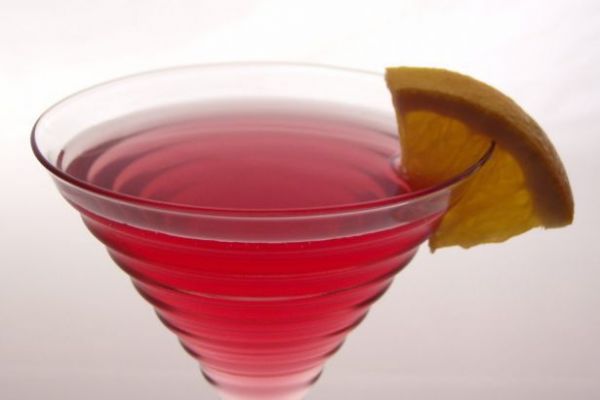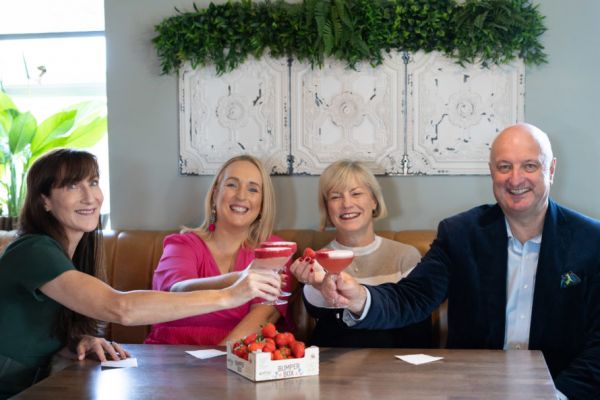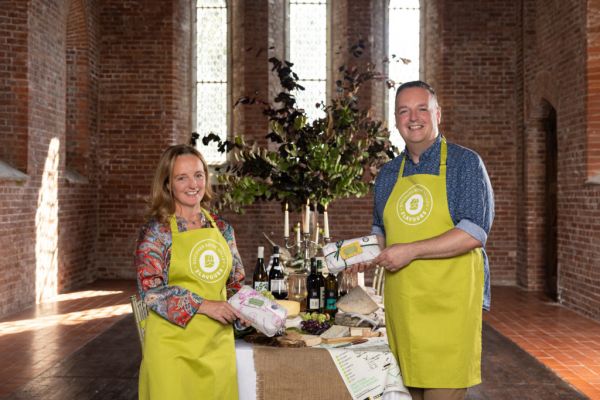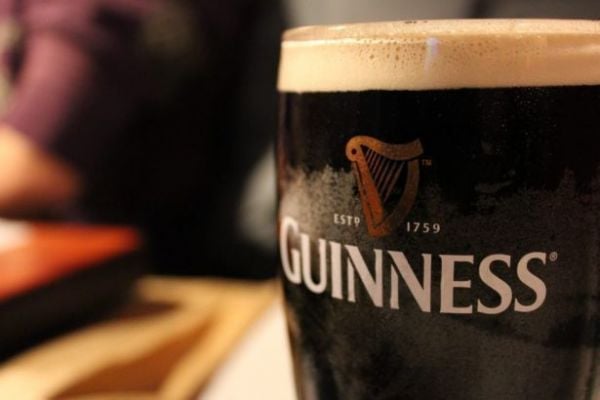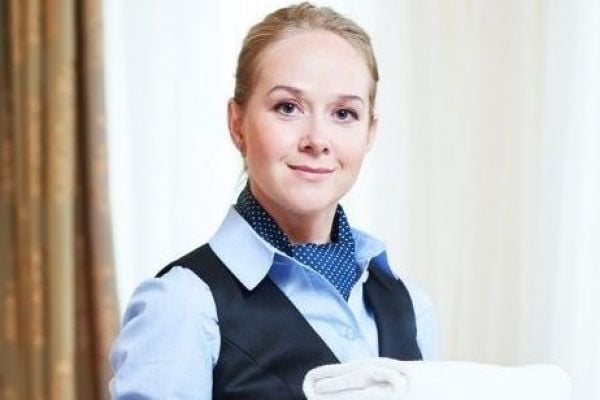One recent cocktail hour in Manhattan, I bellied up to the bar at Porchlight, the Danny Meyer bar on 11th Avenue, beneath the ascendant superblocks of Hudson Yards. Nick Bennett, the head bartender, was behind the stick mixing a Manhattan cocktail.
Put another way: Bennett was standing amid the jagged spires that will symbolize this century in the borough’s life, stirring a drink that has encapsulated its glamour since the 1880s. That’s when a newspaper in tiny Olean, N.Y., introduced this "mixture of whiskey, vermouth, and bitters" to the journalistic record.
“These cocktails are so old, they’ve outlived an actual recipe. They’re more of a category,” Bennett told me, speaking of the Manhattan and its very few paragonic peers, such as the Martini and the Old Fashioned. On a busy night, his bar turns out 30 or 40, to all manner of patrons. “It’s in this weird little transition period where young women are ordering it and old men are ordering it.”
Anecdotal evidence strongly suggests that people of all ages and genders are ordering more Manhattans than ever—potions depending on new ryes and old bourbons, compounds variously aged in barrels and batched in bottles. Bennett’s peers behind the bar have devised an unprecedented wave of worthy Manhattan variations in recent years. “It’s a format that everyone loves building around,” he said, “and it’s one that everyone respects, so they want to make it shine, I guess. But there’s no comparison to the original.” The cocktail epitomizes elegance, offering a simple special balance of herb and grain, spice and fruit, purr and bite.
Moreover, regarded as an artifact of the social history of indulgence, it satisfies the mind with its modernist opulence. People drank before the Manhattan—ale and wine and cobblers and punches and juleps, all manner of colonial treats and primitive pleasures—but they did not drink in quite the same way. “Its advent represents a watershed moment in cocktail history,” Philip Greene wrote in 2016’s The Manhattan: The Story of the First Modern Cocktail. “For the first time, an imported, fortified, aromatized wine known as vermouth modified the structure of the cocktail, adding balance, nuance, sophistication, and sweetness to the base spirit. It completed the revolution and launched a new epoch.” It was, furthermore, not a thing to swig in a frontier saloon but rather a fuel of the city, matchlessly urbane in its casual decadence and lush depth.
The origin stories of many classic cocktails involve intriguing (if insubstantial) trivia and illuminating (if unsubstantiated) myths. The Manhattan’s is, appropriately, grander. To scratch is sumptuous surface is to discover a founding legend of enduring urban entertainments. Drain the glass and discover a cherry of a narrative about the Gilded Age in New York City.
'The Most Widely Propagated of All Drink Myths'
For a typical rendering of “one of the most widely propagated of all drink myths,” turn to the chapter on food and drink in the New York Times Practical Guide to Practically Everything: “The Manhattan was created in 1874, using rye whiskey, at the Manhattan Club in New York, at the behest of Jenny Jerome, a socialite better known in later years as the mother of Winston Churchill. The occasion was an elaborate party celebrating the election of Samuel J. Tilden as governor.”
Jeanette Jerome, who spelled her nickname "Jennie," was born in Brooklyn on Jan. 9, 1854, the eldest daughter of swashbuckling financier Leonard Jerome and his darkly beautiful wife, née Clarissa Hall. Described by an admirer as “radiant, translucent, intense,” Jennie demonstrated athletic talent as an equestrienne, a markswoman, and a big-game husband hunter. She and her sisters inspired Edith Wharton’s unfinished final novel, The Buccaneers, a satire of the trans-Atlantic marriage market. Marrying Lord Randolph Churchill, Jennie set a trend: Heiresses considered mere arrivistes by America’s elite started bouncing to Europe and hitching themselves to aristocrats.
Good for her. But Jennie Jerome—a 20-year-old whose husband was English, whose mother was rumored to be fractionally Iroquois or African, whose father had recently been financially ruined—had no standing as a New York “socialite” in 1874. Given these considerations, the fact that Jennie Jerome was, according to her biographer, not in the U.S. that year seems the least of the barriers to her authorship of the drink.
Nonetheless—and beyond the fact that Lady Churchill’s older son became a magnet for fuddled folklore—there is something happening here.
To repeat the folktale: The cocktail supposedly emerged to celebrate Samuel Tilden, a politician now most famous as the Hillary Clinton of 1876, for later winning the national popular vote but losing the Electoral College tally to a Republican, Rutherford B. Hayes. One element of the origin story seems beyond reasonable dispute: The drink’s name connects it to the Manhattan Club, a social organization for rich Democrats where Tilden indeed celebrated “jollifications” after his 1874 gubernatorial victory. But there is no evidence that Manhattans were served at either—or that Tilden’s staffers drowned their sorrows in them after he was robbed of the presidency.
Writing in Gourmet in 1963, food writer Carol Truax supposed that the Manhattan cocktail emerged from the Manhattan Club in the late 1870s. There is no contemporaneous evidence to support the claim, but not coincidentally, the Manhattan Club did have a direct connection to Jeannette Jerome’s family and way of life.
A Mansion With a Mansard Roof on Madison Square
Born on a farm near Syracuse, Leonard Jerome studied law in Schenectady and practiced it in Rochester, where also he bought a newspaper. He moved to Brooklyn to develop a new-media startup (his own telegraph-line company) and later purchased a 20 percent stake in the New York Times—an interest he defended, during the Draft Riots, by guarding its headquarters with a Gatling gun.
Entering finance, Jerome discovered a knack for short selling, made a mint in the Panic of 1857, and built a Napoleon III showpiece of a house at 32 East 26th Street—a mansion with a mansard roof on Madison Square. The 1859 housewarming party featured two fountains in the ballroom, one spouting Champagne and the other spurting eau de cologne.
Because Leonard was a connoisseur of opera and attractive young women who sang it, the house included a 600-seat theater. Because he appreciated the ponies, it also featured stables paneled in black walnut, as befit his station as “the father of the American Turf.” In 1865, Jerome, with the financier August Belmont and Wall Street's William Travers, founded the American Jockey Club; in 1866, he opened Jerome Park in the Bronx, rendering American horse-racing legitimate as sport and respectable as a pastime. In 1867, it hosted the first running of the Belmont Stakes.
Jerome lost his fortune in the Panic of 1873. Broke, he exploited the mansion as an asset. It had been a mere convenience to locate the offices of the American Jockey Club there. But he needed cash, so he invented a social organization called the Turf Club and leased the house to it. Later, other, more respectable establishments settled in at different times. Jerome leased the building to the Union League Club and the University Club. It fell into the hands of the Manhattan Club in 1899.
We told you earlier that the Manhattan cocktail made its first appearance in print in 1882. Let’s look at that mention more closely, with the light of the Jerome Mansion’s gas lamps flickering upon it: “It is but a short time ago that a mixture of whiskey, vermouth, and bitters came into vogue. … It went under various names—Manhattan cocktail, Turf Club cocktail, and Jockey Club cocktail. Bartenders … are fully cognizant of its various aliases.”
Emphasis added to underscore that the apocryphal Jennie Jerome story eventually gets to the right family, at least: The daughter of Leonard Jerome did not create the Manhattan cocktail, but he, having lived large in a home that hosted the clubs for which it was named—is chief among its spiritual fathers.
The Jerome Mansion was torn down in 1967 and replaced by the exceedingly dull New York Merchandise Mart. Lady Churchill died in 1921, of complications from breaking an ankle in new high-heeled shoes. Leonard Jerome died broke in 1891, by which time the immortality of the Manhattan was well assured.
'The Waldorf-Astoria Bar Was Wall Street Moved Bodily Uptown'
In The Stork Club Bar Book, the bon vivant Lucius Beebe described the Manhattan as “the archetypal short mixed drink” of its age: “Because of its unrivaled tonic qualities as a restorative and element for firming the moral fiber, as well as because of the prevailing American taste for drinks with whisky bases at this time, the classic and standard Manhattan Cocktail … was an almost universal rite until the end of the nineteenth century.”
The leading practitioner of the ritual—the only famous person who is also famous for drinking Manhattans—was J. Pierpont Morgan. The banker and U.S. Steel founder took his daily after-work drink at the Waldorf-Astoria hotel, as did all the thirsty young men who aspired to his throne. According to The Old Waldorf-Astoria Bar Book (1935), every night from 5 p.m. to 8 p.m.,
"The Waldorf-Astoria bar was Wall Street moved bodily uptown for an an adjourned session of the Stock Exchange, with men betting on how stocks would perform the next day. In one discreet corner a ticker kept clicking off news. Here market pools were often formed. Here were to be found men who were willing to bet on anything, and to any amount. Financiers and market operators, with names that gained newspaper front pages every day or so, clustered about the tables, or joined in the maggot-like surge that squirmed for a foothold on the substantial brass tradition that ran along the bottom of the counter."
The old Waldorf was on the corner of 34th Street and Fifth Avenue now occupied by the Empire State Building. It opened in 1893 and was joined to the Astoria four years later by a corridor called Peacock Alley, a “legendary three hundred feet of fashion runway, sideshow and appraiser’s gallery … the all-time corridor of worldly sin.” It is fun and maybe even illuminating to think of that ancient space as Manhattan island condensed into a hallway.
With the Jerome Mansion turned to dust, we must suppose that the mystique of the Manhattan cocktail burns most brightly, like an ice-cold eternal flame, at the present home of the Waldorf-Astoria, 301 Park Avenue. This is not just because management has refurbished the bar program at the Peacock Alley lobby bar and turns out a delicious Manhattan adapted from vintage specs. Nor is it simply that this hotel, like this cocktail, is an institution surpassing all other categories.
No, what clinches it is that the majestic nostalgia of the Waldorf combines with the timeless appeal of all fine hotel bars to match perfectly the mood of the drink. I got to talking about this the other day with Johnny Swet, a veteran barman who put an “Elevated Manhattan” on his menu at the Rickey at Dream Hotel Midtown. “In New York, with all these boutique hotels, there’s a loss of that grand lobby bar,” Swet said. “They aren’t celebrated anymore.”
When I asked Swet if he could recall a quintessential moment of sipping this drink in this city, he flashed on a scene from Jimmy, his rooftop bar at the James Hotel. “It wasn’t my first place, but my first big place,” he remembered. “Everything wasn’t set yet. This must have been late September because we opened in October. It was one of those perfect fall days, and I was making a Manhattan and Janis Joplin’s Maybe came on, with no planning. Looking at the view of New York, drinking whiskey, and listening to Janis Joplin just organically, I was like, This is it.”
The root of the word “Manhattan” is native to America. Most likely, it derives from the Lenape “Mannahatta,” meaning “island of many hills.” But at moments such as the one Swet described, the universe aligns to confirm an alternative etymology holding that the true root is a dialect term meaning “place of general inebriation.”
Or you could stir these two derivations together and decide that the Manhattan cocktail is a barstool fable unto itself, an ongoing liquid epic. With every taste, the drinker partakes of a romance of heady climbs—the intoxicating myth at the foundation of the imperial city.
Manhattan
2 oz. rye whiskey, 1 oz. sweet vermouth, 2 dashes Angostura bitters, 1 dash orange bitters, Lemon peel, Garnish: Two good cherries.
Stir well with good ice. Strain into a chilled cocktail glass. Twist and discard lemon peel. Garnish and serve.
1860 Manhattan
From Peacock Alley at the Waldorf-Astoria Hotel
2.25 oz. Eagle Rare 10-year-old Bourbon, 1.25 oz. Noilly Prat Sweet Vermouth, 0.5 oz. Grand Marnier, 2 long dashes of housemade Aromatic Bitters (Angostura as substitute)
Add ingredients to mixing glass. Add ice cubes and stir for 50 revolutions. Strain into chilled cocktail glass. Garnish with brandied cherry.
Elevated Manhattan
By Johnny Swet, consulting mixologist for the Rickey at Dream Midtown
2 oz. Barterhouse 20-year-old bourbon, 1 oz. Carpano Antica Formula vermouth, 3 dashes Angostura bitters, Garnish: Brandied cherry
Stir to temp, strain into a martini glass
Mother of Exiles
By Porchlight's Nick Bennett
1 oz. Rittenhouse rye, 1 oz. Jameson Irish Whisky, 0.75 oz. Amaro Meletti, 0.25 oz. sherry, Garnish: 1 orange twist, 1 cherry
Build all the ingredients in the mixing glass and top with Kold-Draft ice cubes. Stir for 20-30 seconds or until the cocktail is properly chilled and diluted. Strain into a coupe glass.
Talking Point: This cocktail is named after a phrase describing the Statue of Liberty from a poem written to raise money for the pedestal she now rests on. The cocktail uses ingredients from Spain, Ireland, Italy, and America, trying to recreate the Great American Melting pot.
News by Bloomberg, edited by Hospitality Ireland
